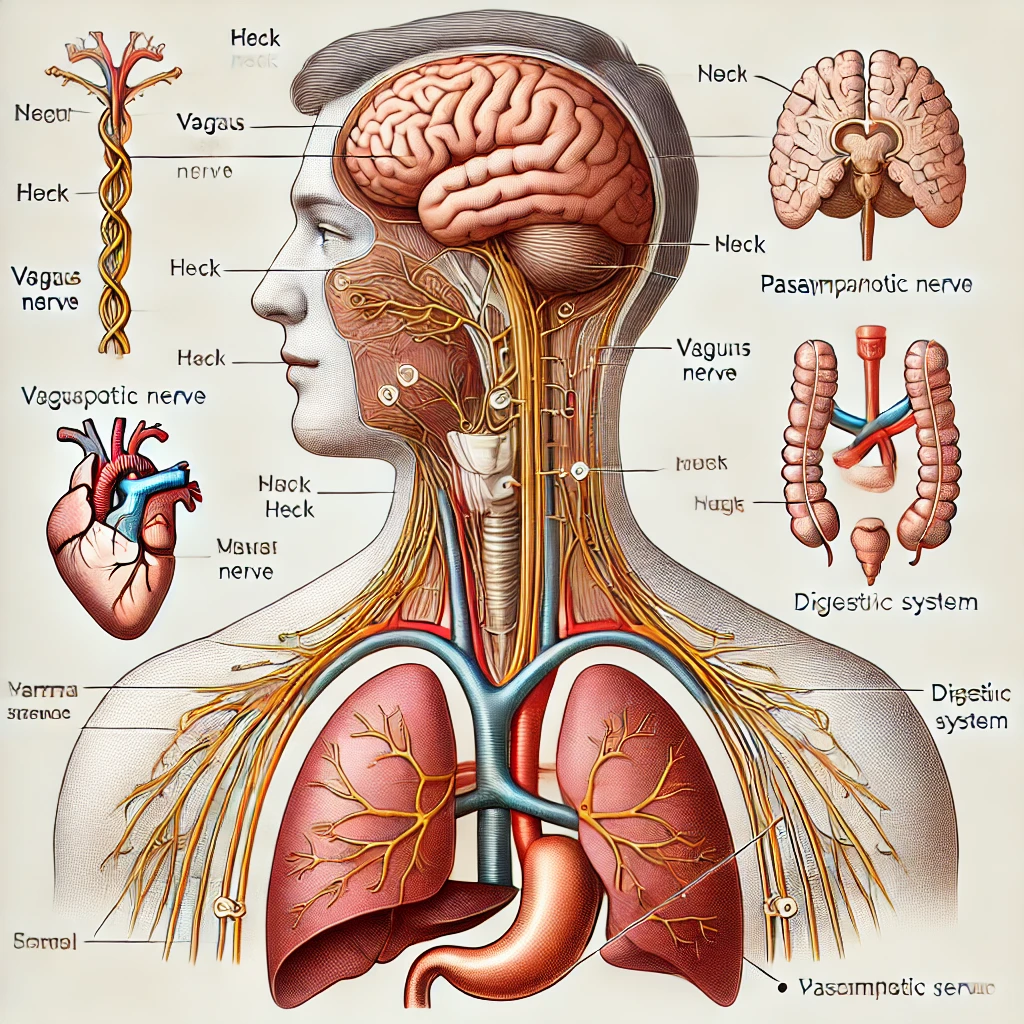
Principles of Polyvagal Theory
Our ability to feel safe plays a fundamental role in how we experience life, love, and relationships. At the core of this experience is our autonomic nervous system (ANS), which governs our responses to safety, stress, and connection. Understanding what is polyvagal theory and how this system functions can help us navigate challenges more effectively and cultivate a deeper sense of well-being.
One of the most ground-breaking insights into the nervous system comes from Polyvagal Theory, developed by Dr. Stephen Porges. This theory explains how our nervous system constantly scans for cues of safety or danger and adapts accordingly. By understanding its principles—neuroception, hierarchy, and co-regulation—we can learn to work with our nervous system instead of against it, fostering resilience and deeper connections.
Understanding the Nervous System Through Polyvagal Theory
Neuroception: The Subconscious Surveillance System
.
Before we consciously process our surroundings, our autonomic nervous system has already assessed whether we are safe, at risk, or in danger. This subconscious process, called neuroception, evaluates safety through three pathways:
- Internal Signals – Sensations within our body, such as heartbeat and gut feelings. Called dorsal vagal shutdown.
- External Environment – Assessing the people, sounds, and spaces around us.
- Relational Cues – Detecting emotional and physical responses in others.
These assessments determine whether we remain calm and engaged, shift into a fight-or-flight response, or shut down completely
The Hierarchy of Nervous System States
Polyvagal Theory outlines three primary states that shape our emotional and physical responses:
Ventral Vagal State (Social Engagement & Connection) – This is the ideal state where we feel calm, connected, and safe. We experience regulated breathing, clear thinking, and a sense of well-being. When in this state, we are open to relationships, creativity, and productivity.
- Sympathetic State (Fight-or-Flight Response) – This response activates when we perceive a threat. It triggers heightened awareness, increased heart rate, and a surge of energy. While necessary for handling danger, chronic activation of this state can lead to anxiety, stress, and physical health issues.
- Dorsal Vagal State (Shutdown & Disconnection) – When stress becomes overwhelming, our system may shift into this mode, leading to withdrawal, fatigue, and emotional numbness. This state can be linked to depression and feelings of hopelessness.
We move through these states naturally, but problems arise when we become stuck in survival modes without the ability to return to a state of regulation.

The Power of Co-Regulation: Healing Through Connection
While self-regulation is often emphasized, research shows that co-regulation—our ability to regulate our nervous system through safe, supportive relationships—is just as crucial. From infancy, human beings rely on connection to feel safe, and this need continues throughout our lives.
By surrounding ourselves with emotionally supportive people, engaging in mindful breathing, and practicing self-compassion, we can help our nervous system return to a place of balance.
How to Foster Nervous System Regulation
To feel safer in life and relationships, consider these strategies:
- https://www.mindful.org/a-five-minute-breathing-meditation/Mindful Breathing: Slow, deep breathing activates the ventral vagus nerve, helping to shift from a stressed state to a calm one.
- Movement & Exercise: Physical activity can release pent-up tension and restore balance.
- Intentional Social Engagement: Spending time with trusted friends and loved ones supports co-regulation.
- Grounding Techniques: Practices like meditation, journaling, and nature walks help bring awareness to the present moment.
Final Thoughts
Understanding how our nervous system shapes our reality allows us to cultivate greater self-awareness and emotional resilience. By applying the principles of Polyvagal Theory, we can strengthen our ability to return to safety and connection, helping us to fully embrace life and relationships.
By fostering a sense of security within ourselves and in our connections, we create the foundation for emotional well-being, personal growth, and a fulfilling life.
About the Author
Hendrina Sterling Rodriguez is a counsellor, psychotherapist, and clinical hypnotherapist specializing in trauma, anxiety, self-confidence, coaching, couples therapy, and more. With a compassionate and science-backed approach, she helps individuals navigate emotional challenges, build resilience, and create meaningful change in their lives.
In addition to her therapeutic work, Hendrina is the author of several books and journals available on Amazon, including:
- Embracing The Shadow: A Comprehensive Therapeutic Workbook and Journal for Healing, Self-Improvement, and Self-Discovery
- Brighten Your Seasons: A Workbook and Journal for Managing SAD and Enhancing Self-Care
- Cultivating Confidence: Boosting Self-Esteem and Empowerment for Personal Success
- Achieving Goals Through Strategic Self-Hypnosis: Featuring the Principles of Emile Coué’s Work on Self-Mastery
- Seasons of Hope: Coping with Seasonal Affective Disorder
- Mindful Living: Techniques for Managing Anxiety and Stress
- …and more.

Ready to Take the Next Step?
If you’re looking to better understand your nervous system, manage stress, or cultivate deeper connections, I’m here to support you. Book a session today and start your journey toward greater well-being and self-awareness.

Leave a Reply